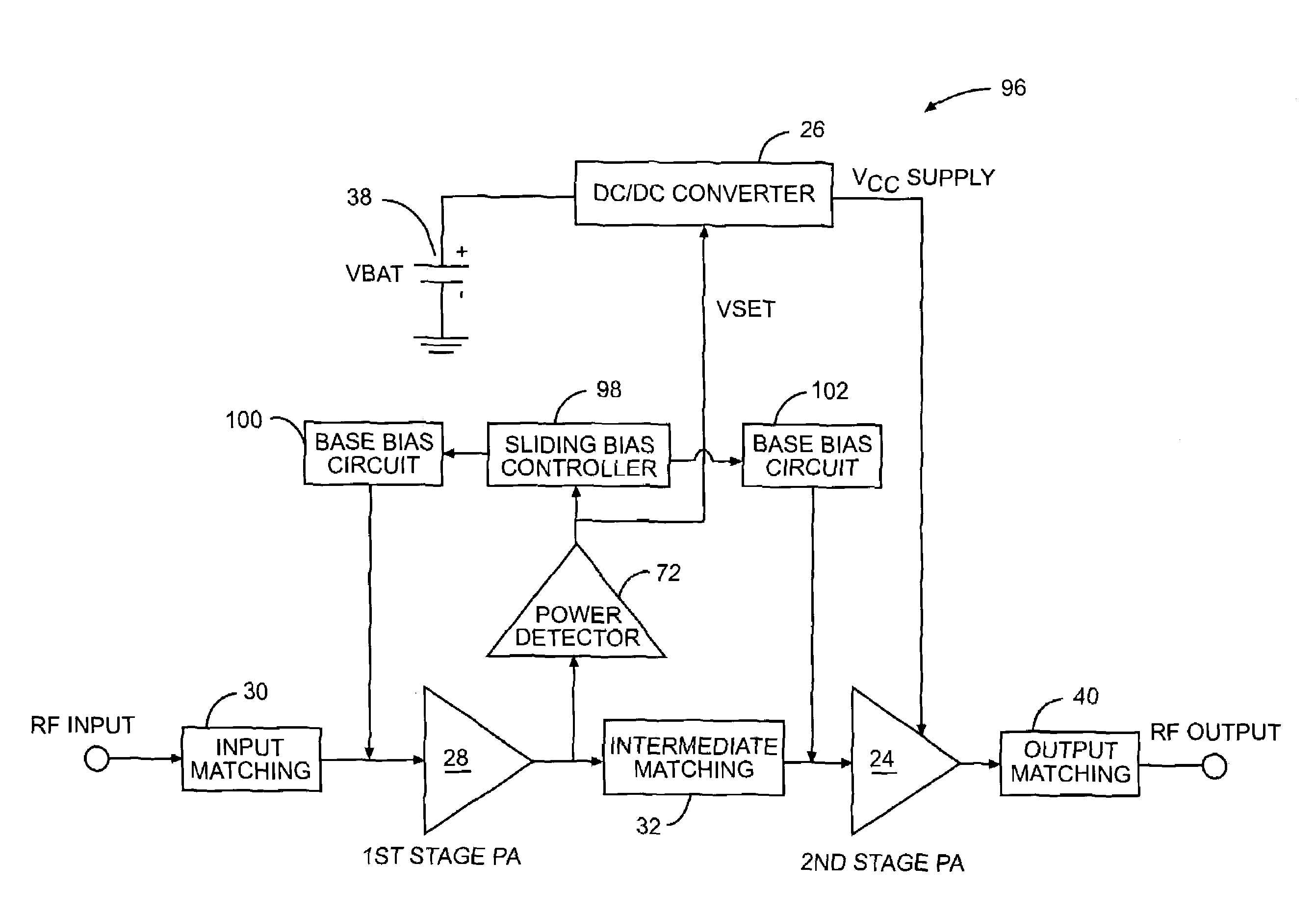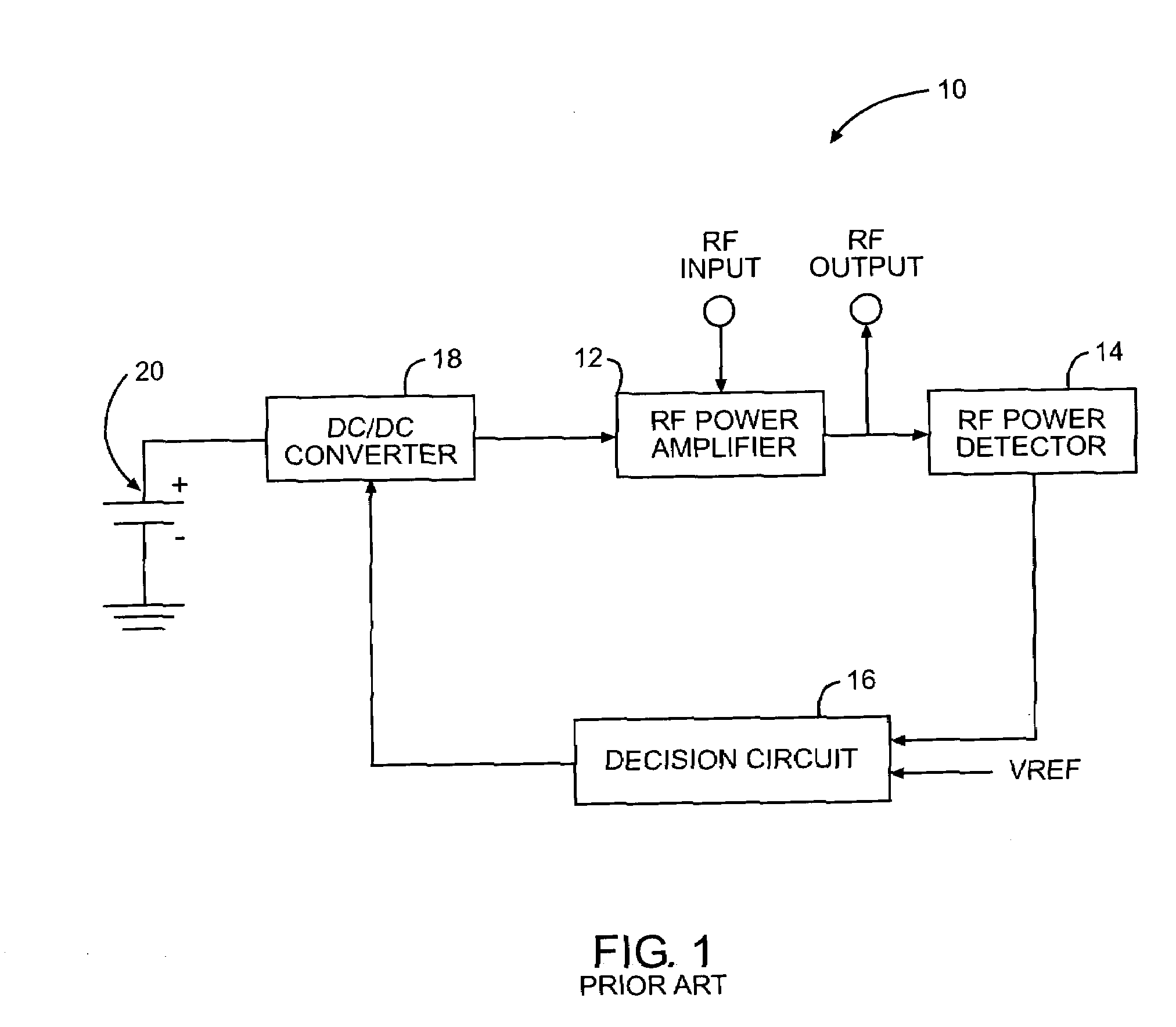Sliding bias controller for use with radio frequency power amplifiers
a bias controller and power amplifier technology, applied in amplifiers, amplifiers with semiconductor devices only, amplifiers with semiconductor devices, etc., can solve the problems of mainly attributed overall power consumption at lower power output levels, and not be suitable for all applications, so as to reduce current consumption, improve power amplifier efficiency, and reduce quiescent currents
- Summary
- Abstract
- Description
- Claims
- Application Information
AI Technical Summary
Benefits of technology
Problems solved by technology
Method used
Image
Examples
Embodiment Construction
[0032]The embodiments set forth below represent the necessary information to enable those skilled in the art to practice the invention and illustrate the best mode of practicing the invention. Upon reading the following description in light of the accompanying drawing figures, those skilled in the art will understand the concepts of the invention and will recognize applications of these concepts not particularly addressed herein. It should be understood that these concepts and applications fall within the scope of the disclosure and the accompanying claims.
[0033]FIG. 6 illustrates a two stage power amplifier circuit 96 that employs a sliding bias controller 98 to control the bias currents of the power amplifier stages 24, 28 and thus the quiescent currents of the power amplifier stages 24, 28 as a result. The bias currents are generated by base bias circuit 100 and base bias circuit 102 to control the operation of the power amplifiers 24, 28. At lower power output levels, the slidin...
PUM
 Login to View More
Login to View More Abstract
Description
Claims
Application Information
 Login to View More
Login to View More - R&D
- Intellectual Property
- Life Sciences
- Materials
- Tech Scout
- Unparalleled Data Quality
- Higher Quality Content
- 60% Fewer Hallucinations
Browse by: Latest US Patents, China's latest patents, Technical Efficacy Thesaurus, Application Domain, Technology Topic, Popular Technical Reports.
© 2025 PatSnap. All rights reserved.Legal|Privacy policy|Modern Slavery Act Transparency Statement|Sitemap|About US| Contact US: help@patsnap.com



